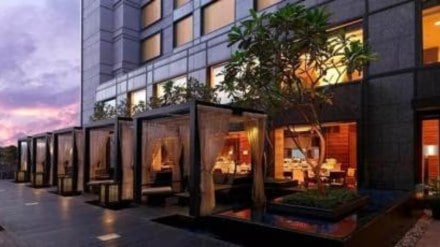The hotel industry will continue to have a good run in 2024 as the stellar growth of the previous year is expected to spill over into the new year. Much like 2023, growth would come from meetings, incentives, conferences and exhibitions (MICE), and leisure travel. Key metro cities and resort locations would be the major beneficiaries.
The industry’s recovery began in the second half of FY22, after the dark era — following the impact of the Covid-19 — lasted nearly 2-2.5 years.
“The outlook for 2024 looks upbeat with average room rates expected to Rs 6,000-6,500 and 13-15% rise in revenue growth, with cities such as Mumbai, Delhi and Bengaluru, leading the price surge with a 12-15% rise. This will be followed by Rishikesh, Udaipur and cities in Rajasthan, traditional hill station locations and Goa,” Amit Razdan, chief operating officer-South Asia at Saraca Hotels & Resorts, said.
India hosting the G20 summit, the cricket fever, the festive and marriage seasons and the Christmas and New Year holiday periods helped the industry last year.
“We see continued momentum in 2024. The segments that will continue to drive demand will be MICE and weddings, while arrival of foreign travellers will see an upward movement, given the government’s focus on India as a travel destination. We see leisure continuing to drive demand with consumers’ desire for travel and exploration being on a high,” Sunjae Sharma, managing director, India and Southwest Asia at Hyatt, said.
According to Nandivardhan Jain, founder and CEO of NOESIS Capital Advisors, a hotel consultancy and investment advisory firm: “The Indian hospitality industry is poised for significant growth in 2024, with a projected revenue of nearly $9 billion. The current market cap of listed hotels, which is at Rs 1.2 trillion, is expected to reach Rs 1.5 trillion.”
“Despite 180,000 branded hotel rooms primarily concentrated in major cities, the focus on tier-II and III cities signals untapped potential. Anticipated growth to 200,000 branded rooms by 2024, coupled with infrastructure developments underscores the industry’s expansion,” Jain said, adding, this year, the industry is slated to add about 20,000 rooms in standardised inventory.
The World Travel & Tourism Council has ranked India as the 10th largest travel and tourism destination, and this coupled with India’s vision to make the country among the top five destinations with a trillion-dollar tourism economy are other positives for the sector.
“The outlook for 2024 looks upbeat with average room rates expected to Rs 6,000-Rs 6,500 and a 13-15% rise in revenue growth, with cities such as Mumbai, Delhi and Bengaluru leading the price surge with a 12-15% rise. This will be followed by Rishikesh, Udaipur and other cities in Rajasthan, traditional hill station locations and Goa,” Razdan said.
“Hotel occupancies are looking to be upbeat as travel trends have shown positive signs everywhere, rising to 65% from the 63%, and industry is expecting a 70-73% occupancy in 2024,” he added.
At present, average room rates (ARR) are at Rs 6,000-7,000, varying from place to place and time, while occupancies were estimated to be in the range of 60-75%.
“This year, top metros and resort destinations may record a 5-10% rise in ARRs and occupancies would increase by 65-75%. The number of signings, hotels under construction and new openings will also rise, and this would be prominent among tier-II and III towns and hinterlands as the hospitality industry increases its share of branded hotels,” Aashish Gupta, consultant CEO, Federation of Associations in Indian Tourism & Hospitality (FAITH), said.
According to Gaurav Shrivastava, director of revenue at Fairmont Jaipur, the Indian travel industry will outperform both 2022 and 2023, while the Jaipur market itself is set to undergo a makeover with four new luxury hotels coming up in 2024.
“The industry will promote enhanced guest experiences through technology integration, address environmental concerns through sustainability practices and will meet a growing demand for wellness tourism. Personalised services based on data analytics, use of contactless services and a focus on unique local culinary offerings will also be part of the operations,” he added.
According to Anand Kulkarni, director at Crisil Ratings: “Demand has grown significantly over the past two fiscals as the pandemic-induced disruptions have receded, and the momentum is expected to continue in fiscal 2025. This has led to branded hotels looking to increase their presence pan-India.”
Crisil tracks the sector on a financial year basis.
“The employee cost per key had declined by about 30% during the pandemic as hotels took various measures, such as rationalising manpower and corporate overheads. However, employee cost per key is expected to revert to the pre-pandemic level due to higher manpower requirements to cater to the increased demand and wage inflation,” Kulkarni added.
